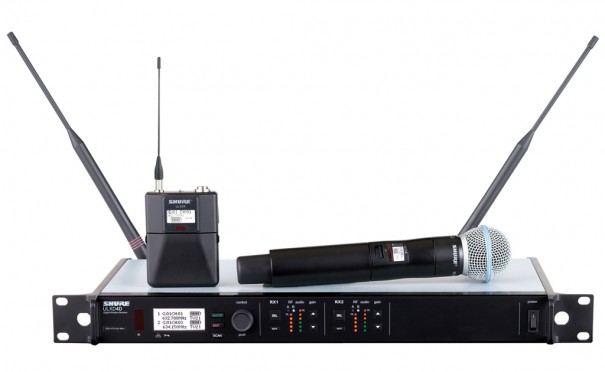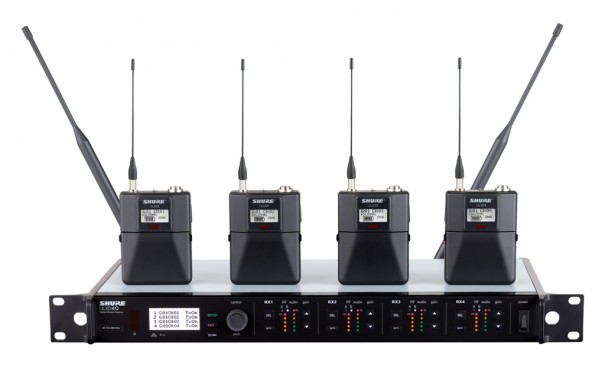El sistema de microfonia inalámbrica ULX-D de Shure, ahora con 2 y 4 canales
Shure Incorporated ha incrementado su sistema de micrófonos digitales inalámbricos ULX-D, al incorporar nuevos receptores múltiples de dos y cuatro canales, una versión de High Density (Alta Densidad) que habilita 47 sistemas para operar en solamente seis MHz del espectro, función Bodypack Frequency Diversity e integración del audio digital Dante que puede conectarse en red.
El sistema inalámbrico digital ULX-D de Shure, Distributed brand in Spain by Earpro, que ofrece una calidad de audio digital premium de 24-bits/48kHz y que usa el sistema de encriptación estándar (AES-256), presenta ahora nuevos receptores múltiples: Dual y Cuádruple. El sistema ULXD4D (2 canales) y el ULXD4Q (4 canales) cuentan con una gran serie de características adicionales, como por ejemplo un modo de alta densidad (High Density), función Bodypack Frequency Diversity y la integración en red de audio digital Dante.
Especialmente diseñado para aplicaciones con un alto número de canales y que requieran un rango de operación de más de 30 metros, el modo de alta densidad (High Density) permite operar con hasta 560 canales en 72MHz, y respectivamente 63 canales en un canal TV de 8MHz.
La función Bodypack Frequency Diversity ofrece una protección contra las posibles pérdidas de señal audio causadas por interferencias RF o por la pérdida de potencia de uno de los transmisores. Las señales procedentes de una fuente común a través de dos transmisores de petaca con diferentes frecuencias, se dirige a las salidas de audio del receptor. El cambio entre canales se produce en milisegundos, sin interrupción de la señal de audio.
Para aplicaciones de audio en red Ethernet, la red Dante proporciona un audio digital sin comprimir, multi-canal y de baja latencia a través de un cable Ethernet estándar.
Michael Suchanka, senior product manager de Shure Europa, He has stated: “Los receptores de los modelos Shure ULX-D Dual y Cuádruple ofrecen una alta calidad audio, estabilidad de la señal RF y una gestión eficiente del espectro, todo ello en una sola unidad de rack. Combinado con todas las otras prestaciones que ofrece ULX-D, los nuevos receptores Dual y Quad llevan las prestaciones de sonido profesional en instalaciones a un nivel superior”.
Ligero y compacto, el chasis de metal de una unidad de rack aloja sus dos o sus cuatro receptores independientes, cada uno con su propio audio y metros de RF, control de ganancia y salidas XLR que pueden ser directos o sumados en 4 vias para un routing de señal flexible. Además y gracias a los montajes RF en cascada y dos puertos Ethernet, las unidades pueden compartir fácilmente la señal de RF y ser conectadas juntas en red para el buen despliegue y la coordinación en aplicaciones multicanal.
You liked this article?
Subscribe to us RSS feed And you won't miss anything.
















